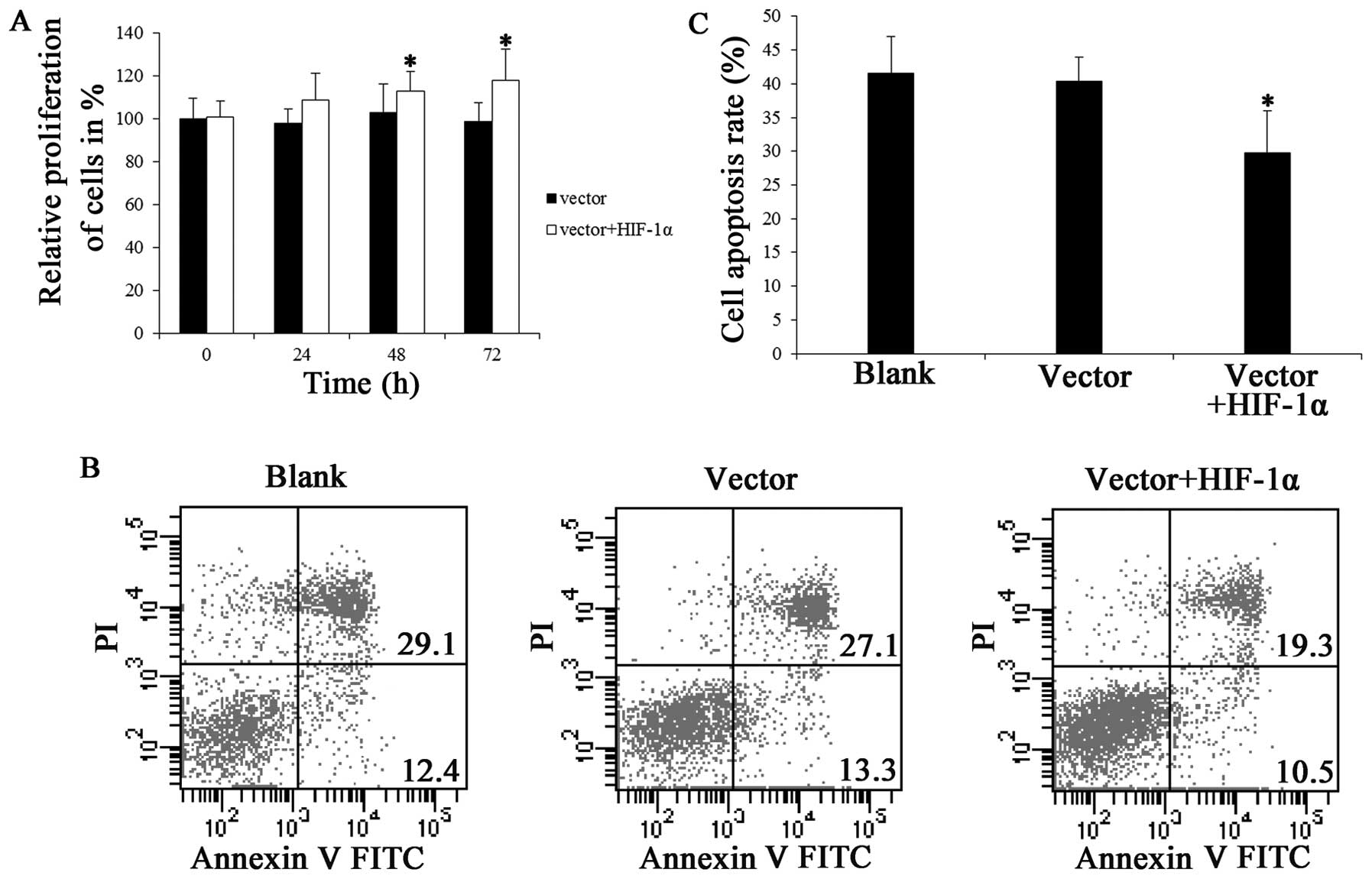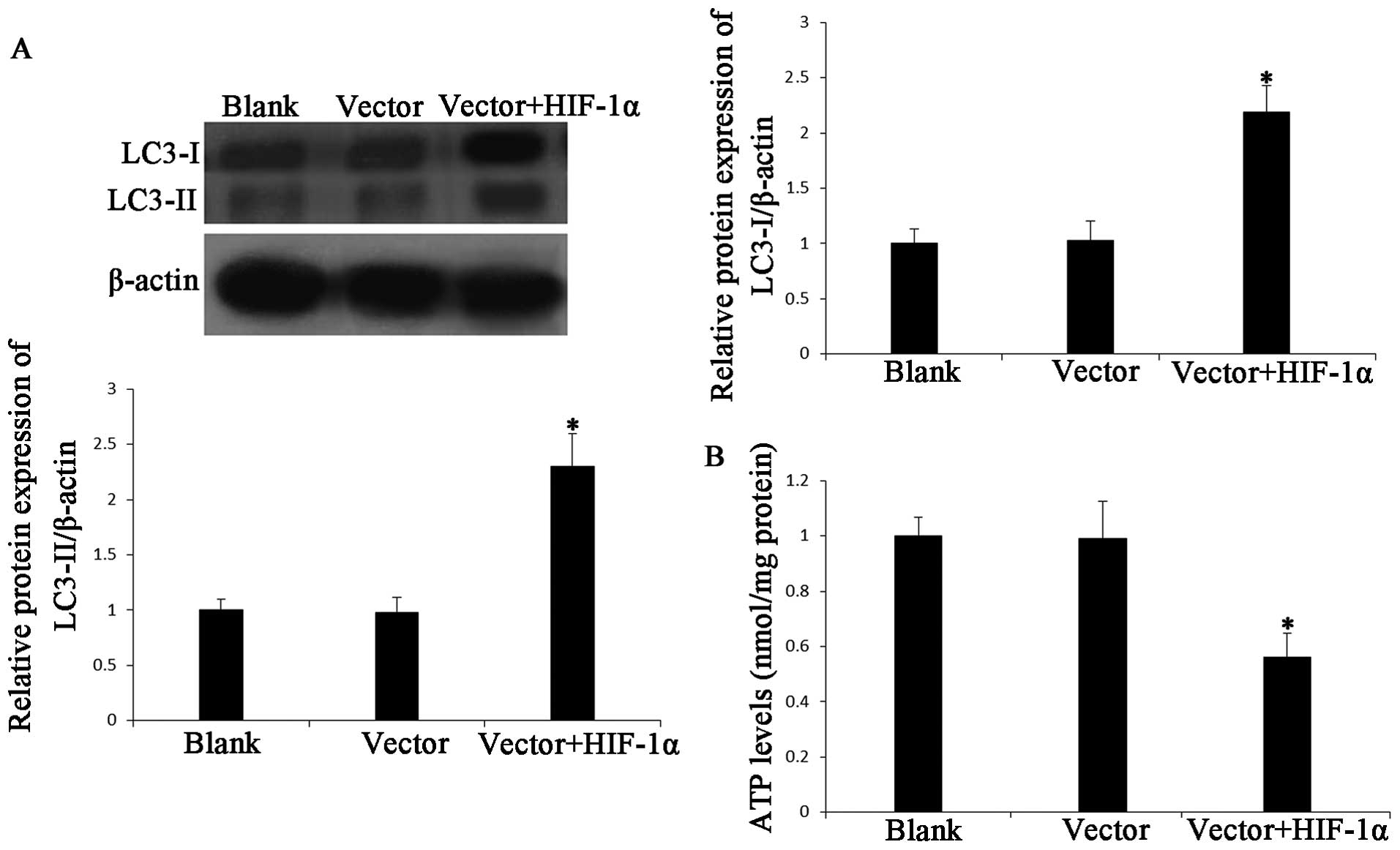|
1
|
Rosamond W, Flegal K, Furie K, et al:
Heart disease and stroke statistics--2008 update: a report from the
American Heart Association Statistics Committee and Stroke
Statistics Subcommittee. Circulation. 117:e25–e146. 2008.
View Article : Google Scholar
|
|
2
|
Wass CT and Lanier WL: Glucose modulation
of ischemic brain injury: review and clinical recommendations. Mayo
Clin Proc. 801–812. 1996.
|
|
3
|
Hackett ML, Duncan JR, Anderson CS, Broad
JB and Bonita R: Health-related quality of life among long-term
survivors of stroke: results from the Auckland Stroke Study,
1991–1992. Stroke. 31:440–447. 2000.PubMed/NCBI
|
|
4
|
Nitatori T, Sato N, Waguri S, et al:
Delayed neuronal death in the CA1 pyramidal cell layer of the
gerbil hippocampus following transient ischemia is apoptosis. J
Neurosci. 15:1001–1011. 1995.PubMed/NCBI
|
|
5
|
Halterman MW and Federoff HJ: HIF-1α and
p53 promote hypoxia-induced delayed neuronal death in models of CNS
ischemia. Exp Neurol. 159:65–72. 1999.
|
|
6
|
Halterman MW, Miller CC and Federoff HJ:
Hypoxia-inducible factor-1alpha mediates hypoxia-induced delayed
neuronal death that involves p53. J Neurosci. 19:6818–6824.
1999.PubMed/NCBI
|
|
7
|
Chen CJ, Cheng FC, Liao SL, Chen WY, Lin
NN and Kuo JS: Effects of naloxone on lactate, pyruvate metabolism
and antioxidant enzyme activity in rat cerebral
ischemia/reperfusion. Neurosci Lett. 287:113–116. 2000. View Article : Google Scholar : PubMed/NCBI
|
|
8
|
Semenza GL: HIF-1: mediator of
physiological and pathophysiological responses to hypoxia. J Appl
Physiol. 88:1474–1480. 2000.PubMed/NCBI
|
|
9
|
Melillo G: HIF-1: a target for cancer,
ischemia and inflammation--too good to be true? Cell Cycle.
3:149–150. 2004. View Article : Google Scholar : PubMed/NCBI
|
|
10
|
Brahimi-Horn MC and Pouysségur J: Oxygen,
a source of life and stress. FEBS Lett. 581:3582–3591.
2007.PubMed/NCBI
|
|
11
|
Wang GL, Jiang B-H and Semenza GL: Effect
of protein kinase and phosphatase inhibitors on expression of
hypoxia inducible factor 1. Biochem Biophys Res Commun.
216:669–675. 1995. View Article : Google Scholar : PubMed/NCBI
|
|
12
|
Huang LE, Gu J, Schau M and Bunn HF:
Regulation of hypoxia-inducible factor 1alpha is mediated by an
O2-dependent degradation domain via the
ubiquitin-proteasome pathway. Proc Natl Acad Sci USA. 95:79871998.
View Article : Google Scholar : PubMed/NCBI
|
|
13
|
Wang GL, Jiang B-H, Rue EA and Semenza GL:
Hypoxia-inducible factor 1 is a basic-helix-loop-helix-PAS
heterodimer regulated by cellular O2 tension. Proc Natl
Acad Sci USA. 92:5510–5514. 1995. View Article : Google Scholar : PubMed/NCBI
|
|
14
|
Mazure NM and Pouysségur J:
Hypoxia-induced autophagy: cell death or cell survival? Current
opinion in cell biology. 22:177–180. 2010. View Article : Google Scholar : PubMed/NCBI
|
|
15
|
Zhang H, Gao P, Fukuda R, et al: HIF-1
inhibits mitochondrial biogenesis and cellular respiration in
VHL-deficient renal cell carcinoma by repression of C-MYC activity.
Cancer Cell. 11:407–420. 2007. View Article : Google Scholar : PubMed/NCBI
|
|
16
|
Sowter HM, Ratcliffe PJ, Watson P,
Greenberg AH and Harris AL: HIF-1-dependent regulation of hypoxic
induction of the cell death factors BNIP3 and NIX in human tumors.
Cancer Res. 61:6669–6673. 2001.PubMed/NCBI
|
|
17
|
Zhang H, Bosch-Marce M, Shimoda LA, et al:
Mitochondrial autophagy is an HIF-1-dependent adaptive metabolic
response to hypoxia. J Biological Chem. 283:10892–10903. 2008.
View Article : Google Scholar : PubMed/NCBI
|
|
18
|
Menzies RA and Gold PH: The turnover of
mitochondria in a variety of tissues of young adult and aged rats.
J Biol Chem. 246:2425–2429. 1971.PubMed/NCBI
|
|
19
|
Rosenthal RE, Hamud F, Fiskum G, Varghese
PJ and Sharpe S: Cerebral ischemia and reperfusion: prevention of
brain mitochondrial injury by lidoflazine. J Cereb Blood Flow
Metab. 7:752–758. 1987. View Article : Google Scholar : PubMed/NCBI
|
|
20
|
Mei Y, Thompson MD, Cohen RA and Tong X:
Autophagy and oxidative stress in cardiovascular diseases. Biochim
Biophys Acta. May 13–2014.(Epub ahead of print).
|
|
21
|
Ma S, Wang Y, Chen Y and Cao F: The role
of the autophagy in myocardial ischemia/reperfusion injury. Biochim
Biophys Acta. May 21–2014.(Epub ahead of print).
|
|
22
|
Ghavami S, Gupta S, Ambrose EC, Hnatowich
M, Freed DH and Dixon IM: Autophagy and Heart Disease: Implications
for Cardiac Ischemia-Reperfusion Damage. Curr Mol Med. June
2–2014.(Epub ahead of print).
|
|
23
|
Ermak G, Sojitra S, Yin F, Cadenas E,
Cuervo AM and Davies KJ: Chronic expression of RCAN1-1L protein
induces mitochondrial autophagy and metabolic shift from oxidative
phosphorylation to glycolysis in neuronal cells. J Biol Chem.
287:14088–14098. 2012. View Article : Google Scholar
|
|
24
|
Gong QH, Wang Q, Shi JS, Huang X-n, Liu Q
and Ma H: Inhibition of caspases and intracellular free Ca2+
concentrations are involved in resveratrol protection against
apoptosis in rat primary neuron cultures. Acta Pharmacol Sin.
28:1724–1730. 2007. View Article : Google Scholar : PubMed/NCBI
|
|
25
|
Murphy TH and Baraban JM: Glutamate
toxicity in immature cortical neurons precedes development of
glutamate receptor currents. Brain Res Dev Brain Res. 57:146–150.
1990. View Article : Google Scholar : PubMed/NCBI
|
|
26
|
Choi DW, Maulucci-Gedde M and Kriegstein
AR: Glutamate neurotoxicity in cortical cell culture. J Neurosci.
7:357–368. 1987.PubMed/NCBI
|
|
27
|
Wei L, Lu J, Feng L, Li S, Shan J and Li
Y: Construction of recombinant adenovirus vector containing a
modified gene that codes for human hypoxia-inducible factor-1α
without oxygen-dependent degradation domain. Plasmid. 63:20–26.
2010.PubMed/NCBI
|
|
28
|
Bryant CS, Munkarah AR, Kumar S, et al:
Reduction of hypoxia-induced angiogenesis in ovarian cancer cells
by inhibition of HIF-1 alpha gene expression. Arch Gynecol Obstet.
282:677–683. 2010. View Article : Google Scholar : PubMed/NCBI
|
|
29
|
Livak K and Schmittgen T: Analysis of
relative gene expression data using real-time quantitative PCR and
the 2(−Delta Delta C(T)) Method. Methods. 25:402–408. 2001.
|
|
30
|
Song YX, Yue ZY, Wang ZN, et al:
MicroRNA-148b is frequently down-regulated in gastric cancer and
acts as a tumor suppressor by inhibiting cell proliferation. Mol
Cancer. 10:12011. View Article : Google Scholar : PubMed/NCBI
|
|
31
|
Zadran S, Sanchez D, Zadran H, Amighi A,
Otiniano E and Wong K: Enhanced-acceptor fluorescence-based single
cell ATP biosensor monitors ATP in heterogeneous cancer populations
in real time. Biotechnol Lett. 35:175–180. 2013. View Article : Google Scholar : PubMed/NCBI
|
|
32
|
Sowter HM, Raval R, Moore J, Ratcliffe PJ
and Harris AL: Predominant role of hypoxia-inducible transcription
factor (Hif)-1α versus Hif-2α in regulation of the transcriptional
response to hypoxia. Cancer Res. 63:6130–6134. 2003.
|
|
33
|
Esteban MA, Tran MG, Harten SK, et al:
Regulation of E-cadherin expression by VHL and hypoxia-inducible
factor. Cancer Res. 66:3567–3575. 2006. View Article : Google Scholar : PubMed/NCBI
|
|
34
|
Sendoel A, Kohler I, Fellmann C, Lowe SW
and Hengartner MO: HIF-1 antagonizes p53-mediated apoptosis through
a secreted neuronal tyrosinase. Nature. 465:577–583. 2010.
View Article : Google Scholar : PubMed/NCBI
|
|
35
|
Sirén AL, Fratelli M, Brines M, et al:
Erythropoietin prevents neuronal apoptosis after cerebral ischemia
and metabolic stress. Proc Natl Acad Sci USA. 98:4044–4049.
2001.PubMed/NCBI
|
|
36
|
Chandel N, Maltepe E, Goldwasser E,
Mathieu C, Simon M and Schumacker P: Mitochondrial reactive oxygen
species trigger hypoxia-induced transcription. Proc Natl Acad Sci
USA. 95:11715–11720. 1998. View Article : Google Scholar : PubMed/NCBI
|
|
37
|
Levine B, Mizushima N and Virgin HW:
Autophagy in immunity and inflammation. Nature. 469:323–335. 2011.
View Article : Google Scholar : PubMed/NCBI
|
|
38
|
Geng J and Klionsky DJ: The Atg8 and Atg12
ubiquitin-like conjugation systems in macroautophagy. EMBO Rep.
9:859–864. 2008. View Article : Google Scholar : PubMed/NCBI
|
|
39
|
Kraft LJ and Kenworthy AK: Imaging protein
complex formation in the autophagy pathway: analysis of the
interaction of LC3 and Atg4BC74A in live cells using Förster
resonance energy transfer and fluorescence recovery after
photobleaching. J Biomed Opt. 17:0110081–01100812. 2012.PubMed/NCBI
|
|
40
|
Mijaljica D, Prescott M and Devenish RJ:
Different fates of mitochondria: alternative ways for degradation?
Autophagy. 3:4–9. 2007. View Article : Google Scholar : PubMed/NCBI
|
|
41
|
Du F, Zhu L, Qian ZM, Wu XM, Yung WH and
Ke Y: Hyperthermic preconditioning protects astrocytes from
ischemia/reperfusion injury by up-regulation of HIF-1 alpha
expression and binding activity. Biochim Biophys Acta.
1802:1048–1053. 2010. View Article : Google Scholar
|
|
42
|
Du F, Wu XM, Gong Q, He X and Ke Y:
Hyperthermia conditioned astrocyte-cultured medium protects neurons
from ischemic injury by the up-regulation of HIF-1 alpha and the
increased anti-apoptotic ability. Eur J Pharmacol. 666:19–25. 2011.
View Article : Google Scholar
|















